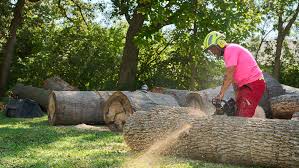In today’s international, towns are developing at an extraordinary tempo, bringing precise demanding situations to urban environments. The need for sustainable urban development has become crucial to assisting financial boom, environmental health, and social well-being. Let’s discover the best techniques to create resilient, eco-friendly towns that can thrive for generations.
Embracing Green Building Practices
A fundamental pillar of sustainable urban improvement is adopting inexperienced construction practices. The creation enterprise is answerable for many greenhouse gas emissions, so incorporating green materials and designs can substantially reduce environmental impacts. Recycled substances, low-carbon cement, electricity-efficient designs, improved insulation, and inexperienced roofs are becoming famous in towns worldwide. These inexperienced homes reduce energy consumption, create healthier indoor spaces, and promote a greener city panorama.
Green constructing certifications, like LEED (Leadership in Energy and Environmental Design), provide frameworks to inspire sustainability in production, guiding architects, Construction companies in Oman, and developers in the direction of extra environmentally accountable practices. Cities are investing in green construction technologies to make certain city increase does no longer compromise air best, aid availability, or weather resilience.
Integrating Renewable Energy Sources
Transitioning to renewable power is a essential aspect of sustainable urban residing. Solar panels, wind generators, and geothermal structures may be included in city infrastructures, decreasing dependence on fossil fuels and reducing carbon footprints. Urban microgrids and energy garage solutions allow cities to control renewable energy domestically, optimizing utilization and minimizing energy losses.
Cities like San Diego and Copenhagen have correctly incorporated renewable strength into their urban planning, placing bold goals to attain one hundred renewable strengths in the coming long time. By harnessing renewables, towns can ensure a cleaner, greater sustainable future whilst improving electricity safety and affordability for citizens.
Implementing Efficient Waste Management Systems
Managing waste correctly is critical for sustainable town environments. Reducing, reusing, and recycling waste can notably decrease the quantity of material finishing up in landfills, reducing emissions and protecting property. Innovative waste-to-energy technology converts waste into usable electricity, providing a sustainable answer for city regions grappling with developing waste volumes.
Composting and biodegradable materials also assist in restriction waste, turning herbal waste into nutrient-rich compost that advantages town inexperienced areas. Some cities are main the way through enforcing compulsory recycling packages and waste discount desires, putting a version for lowering city waste, and improving sustainability.
Adopting Sustainable Transportation Solutions
Transportation is a main contributor to city carbon emissions, and cities should adopt sustainable transportation solutions to address this. Developing inexperienced public transit structures, which include buses, subways, and trams, can dramatically reduce the reliance on private automobiles, decreasing emissions. Additionally, towns are designing pedestrian-pleasant areas and motorcycle lanes to inspire strolling and cycling, promoting a more healthy, greater environmentally pleasant manner of shifting via city areas.
Electric automobiles (EVs) and charging infrastructure are also quintessential to sustainable city mobility. As cities undertake EVs for public transit and incentivize personal EV use, they lessen emissions at the same time as presenting clean, handy alternatives for residents. A well-related and sustainable transportation machine is essential to lowering pollution, enhancing urban livability, and helping healthful surroundings.
Leveraging Smart City Technologies
Smart town technologies are revolutionizing city-making plans using enabling facts-driven selection-making. With the Internet of Things (IoT) and artificial intelligence (AI), cities can optimize aid management, from strength and water use to visitors go with the flow. Sensors embedded in city infrastructure collect real-time records, allowing cities to respond to converting situations effectively.
For example, clever traffic structures reduce congestion and emissions by adjusting sign timings primarily based on visitor patterns, whilst clever meters screen electricity utilization, helping to manage calls for and reduce waste. These technologies enhance city resilience and sustainability, making towns extra responsive to citizens’ desires and less impactful on the surroundings.
Focusing on Water Conservation and Management
Water shortage is a developing issue in city regions, making water conservation a top priority. Cities are adopting water-saving technology, including low-flow furniture and rainwater harvesting systems, to lessen water waste. Green infrastructure, like permeable pavements and rain gardens, enables control of stormwater, decreasing the threat of city flooding and improving groundwater recharge.
Recycling wastewater and making an investment in desalination plant life also are effective strategies for water control in water-harassed areas. Sustainable water practices make sure that urban areas can meet destiny needs without laborious local water assets, promoting balanced and resilient urban surroundings.
Expanding Urban Green Spaces
Urban green spaces play a crucial role in enhancing air quality, lowering city warmth, and improving the general great of existence for residents. Parks, inexperienced roofs, and community gardens provide city citizens a smash from the concrete and steel, growing regions for recreation, relaxation, and community activities. These areas now not handiest enhance intellectual health but also aid biodiversity with the aid of presenting habitats for city flora and fauna.
Cities are recognizing the fee of integrating inexperienced areas into urban planning. Urban reforestation initiatives, for example, upload trees alongside streets and in parks, which facilitates taking in CO2, offers color, and decreases temperatures, making towns more snug and ecologically balanced.
Engaging Communities in Sustainability Efforts
Sustainable urban development cannot succeed without network involvement. Cities are more and more enticing citizens in sustainability packages, from recycling projects to urban farming projects. Education and cognizance campaigns assist residents in apprehending the significance of sustainable practices, encouraging them to adopt green behavior.
Community-based total programs, like neighborhood cleanups and strength-saving demanding situations, foster a feeling of obligation amongst residents. When groups are actively involved, they grow to be effective allies in the quest for sustainability, using fantastic exchange from the grassroots level and supporting metropolis-extensive sustainability desires.
Creating Policies to Support Sustainable Development
Governments play a critical function in growing a framework for sustainable urban improvement. Policy initiatives, consisting of tax incentives for green construction, subsidies for renewable strength installations, and regulations to limit emissions, are vital for selling sustainable practices. By setting requirements and providing economic assistance, governments permit businesses and citizens to undertake environmentally accountable practices.
Cities like Amsterdam and Singapore have carried out ahead-questioning regulations that prioritize sustainability. With strong governance and guidance from industries, consisting of Steel Distributors in California, cities can create an environment where sustainable improvement becomes the norm, no longer the exception, paving the way for a greener future.
Conclusion
The adventure closer to sustainable urban development is a challenging yet important undertaking. By imposing green building practices, integrating renewable strength, improving waste control, and promoting sustainable transportation, cities can reduce their environmental effect and improve residents’ high quality of existence. Smart city technology, community involvement, and supportive guidelines are crucial in attaining these desires, growing resilient towns that can thrive in an unexpectedly converting global.
As we look to destiny, it’s clear that sustainable city improvement isn’t just an ideal but a need. Cities, governments, corporations, and groups have to come together to create sustainable environments that guide economic increase, environmental health, and social well-being.

















